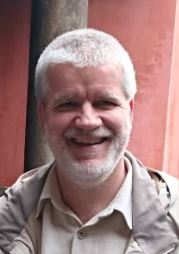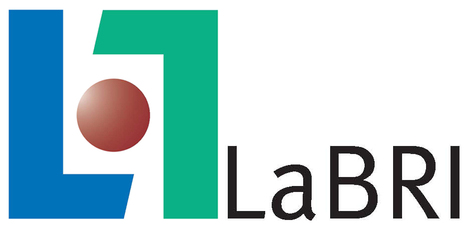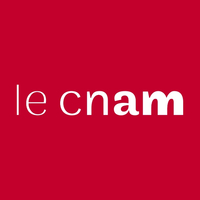|
|
|
KeynotesRalf KLASING  Bamboo Garden Trimming Problem
Résumé : A garden is populated by n bamboos, each with its own daily growth rate. The Bamboo Garden Trimming Problem (BGT) is to design for a robotic gardener a perpetual schedule of cutting bamboos to keep the elevation of the garden as low as possible. The frequency of cutting is constrained by the time needed to move from one bamboo to the next, which is one day in Discrete BGT and is defined by the distance between the two bamboos in Continuous BGT. The bamboo garden is a metaphor for a collection of machines which have to be serviced, with different frequencies, by a robot which can service only one machine at a time. For Discrete BGT, we show a simple 4-approximation algorithm and, by exploiting relationship between BGT and the classical Pinwheel Scheduling Problem, we derive a 2-approximation for the general case and a tighter approximation when the growth rates are balanced. For Continuous BGT, we propose approximation algorithms which achieve logarithmic approximation ratios.
Biographie : Ralf Klasing received the PhD degree from the University of Paderborn in 1995. From 1995 to 1997, he was an Assistant Professor at the University of Kiel. From 1997 to 1998, he was aResearch Fellow at the University of Warwick. From 1998 to 2000, he was an Assistant Professor at RWTH Aachen. From 2000 to 2002, he was a Lecturer at King’s College London. In 2002, he joined the CNRS as a permanent researcher. From 2002 to 2005, he was affiliated to the laboratory I3S in Sophia Antipolis. Currently, he is affiliated to the laboratory LaBRI in Bordeaux. In 2009, he received the HDR degree from the University Bordeaux 1. In 2010, he was promoted to Senior Researcher (DR CNRS). From 2010 to 2015, he was the Head of the Combinatorics and Algorithms team of the LaBRI. His research interests are in "Design and Analysis of Algorithms" and in "Complexity". More particularly, his research focuses on
He has co-authored three book chapters, two Springer Monographs, and has published 72 papers in refereed international journals and 61 papers in refereed international conferences with proceedings. He has published 6 invited papers in international conferences. He has given 19 invited talks at international conferences, and 1 invited lecture series. He has edited 6 LNCS volumes, 1 CCIS volume, and 6 special issues of the international journals ACM Journal of Experimental Algorithmics, Algorithmica, Journal of Computer and System Sciences, Journal of Information Science and Engineering, andTheoretical Computer Science.
Affiliations : CNRS, LaBRI, Université de Bordeaux, France
 Vania Conan
 Souveraineté numérique : quel impact pour les infrastructures de télécommunication ?
Résumé : Les questions de souveraineté numérique ont reçu un intérêt renouvelé dans le contexte actuel avec le rôle du plus en plus influent des GAFAM et avec l’accroissement des tensions internationales, singulièrement en Europe. Des réglementations ont été mises en place pour protéger les données personnelles des Européens (RGPD), encadrer les développements des algorithmes d’IA (AI Act), et structurer le domaine des services informatiques (Digital Services Act). Le but de l’exposé est de regarder quel rôle joue la question de la souveraineté dans les développements de l’infrastructure numérique sous-jacente, des réseaux de communications et des centres de calcul. Nous passerons en revue les évolutions de l’Internet, de la 6G, du cloud dans le but de repérer des liens entre développements techniques, innovations scientifiques et les questions de souveraineté.
Biographie : Vania Conan est professeur du CNAM, titulaire de la chaire ‘infrastructures numériques souveraines’. Il est diplômé de l’Ecole des Mines de Paris (ingénieur civil, 1990 et docteur en informatique, 1996) et Habilité à Diriger des Recherches (Sorbonne Université, 2012). A Thales jusqu’en 2024, il développe une activité de recherche sur les communications sans fil (réseaux ad-hoc, 5G/6G), les réseaux logiciels et les infrastructures sécurisées. Affiliations : Laboratoire CEDRIC du CNAM

Yassine HADJADJ-AOUL  Advancing Network Slicing Optimization: From Classical Deep Reinforcement Learning to Graph Neural Networks
Résumé : Due to their dynamic nature and the multitude of involved parameters, network optimization problems are typically complex. This complexity is further increased by the distributed nature of these networks, coupled with the need to simultaneously take into account the variety of objectives and constraints, mainly related to the supported services. Conventional optimization methods generally fail to address these problems, as they do not provide scalable and robust solutions capable of dynamically adapting to changing network conditions. To overcome these obstacles, several machine learning-based approaches, and particularly reinforcement learning, have emerged in recent years. Although effective, these approaches are generally unable to grasp the graph topology of the networks and the richness of information, they also struggle to generalize, in addition to being unexplainable black boxes, which limits the practical utility of these approaches. In this context, Graph Neural Networks (GNNs) have emerged as a promising approach, leveraging the power of deep learning to process graph-structured data effectively, which is typically needed in several networking problems.
This talk will explore the evolution of network slicing optimization, starting with classical deep reinforcement learning (DRL) methods and progressing to the potential of GNNs. It will examine how GNNs can enhance the performance of network slicing by providing a more robust framework for addressing challenges such as resource allocation, service migration and services' scalability. We will also explore the strengths and current limitations of using such approaches, offering insights into how they may shape the future of network slicing optimization.
Biographie : Yassine Hadjadj-Aoul is a Full Professor at the University of Rennes, France, and a member of the IRISA Laboratory and INRIA Ermine team. He holds a Ph.D. in Computer Science from the University of Versailles (2007) and completed postdoctoral research at Lille University and UCD, Ireland, as a Marie Curie Fellow. His research spans network automation, congestion control, network slicing, NFV, and QoS/QoE provisioning, with a focus on employing AI-driven strategies, including deep reinforcement learning and advanced heuristics, to optimize next-generation networks.
Affiliations : University of Rennes, IRISA/INRIA Ermine team-project
  |


